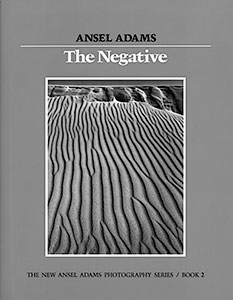
(paid link)
Beyond the Digital Zone System
I remember the scene, but not the exact time; it must have been during the 1990’s. I had gone to a local camera store in El Paso to see what darkroom chemicals they had available. We were talking about black-and-white 35 millimeter film, and at some point I mentioned that I used the zone system. The clerk looked at me with a face of incredulity, and a little skepticism, and said, “with 35 millimeter?”
The digital age has now arrived with full force, and the same incredulity about the zone system still lingers in the minds of at least some photographers, as evidenced by the content of web pages and discussion groups all over the internet. I will assert that even though the zone system was developed in the context of conventional black-and-white negatives, its underlying principles are applicable to any type of photography.
A general approach to applying the zone system to any photographic media
The second volume of Ansel Adams’ photography series, 1981 edition, contains a chapter called “The Zone System,” which may rightly be considered the definitive source of information for this storied technique. But keen-eyed observers will note that the title of the book itself is The Negative.
The book’s introduction begins:
From the chapter, “The Zone System”:
The introduction continues:
In other words, this book is about conventional photography with the negative, but the zone system applies to more media than just that. Note Ansel’s description of “the zone system in a nutshell”: relating subject luminances with print values. This is certainly applicable, and desirable, when using any media.
A thorough reading of all of Ansel’s technical books (especially Polaroid Land Photography, the “other” zone system book) will dispel a number of myths that have grown up around the zone system, most having to do with the fact that when Ansel talked about it, he was usually referring to its application to black-and-white negatives. I am not going to try to convince you of this, but rather show you what the books themselves say, so you can make up your own mind. I am then going to attempt to extract the underlying principles of the zone system from what Ansel said about its application to negatives, transparencies, and Polaroid materials, and propose a general approach to applying the zone system to any photographic media.
Next: zone system myths